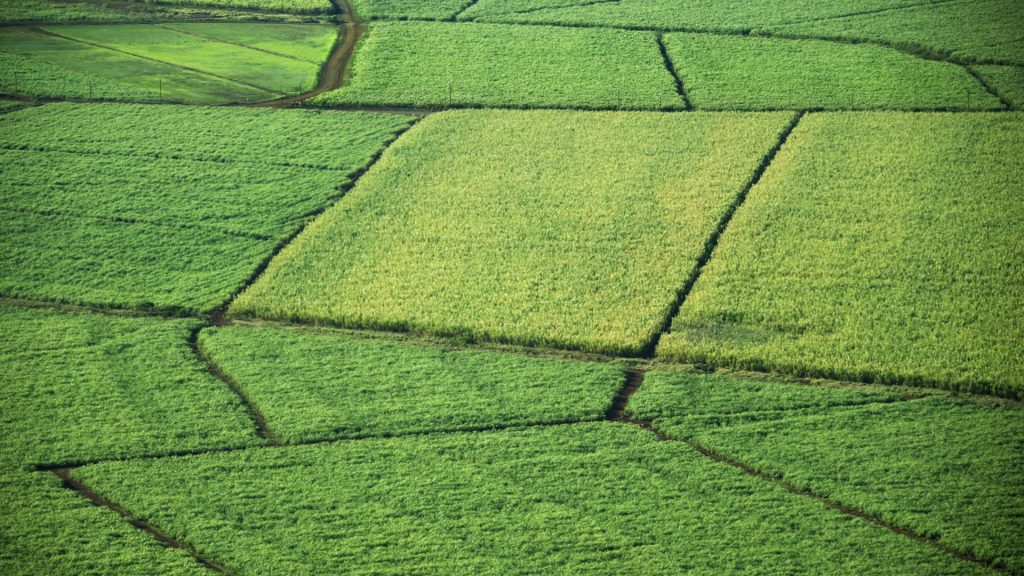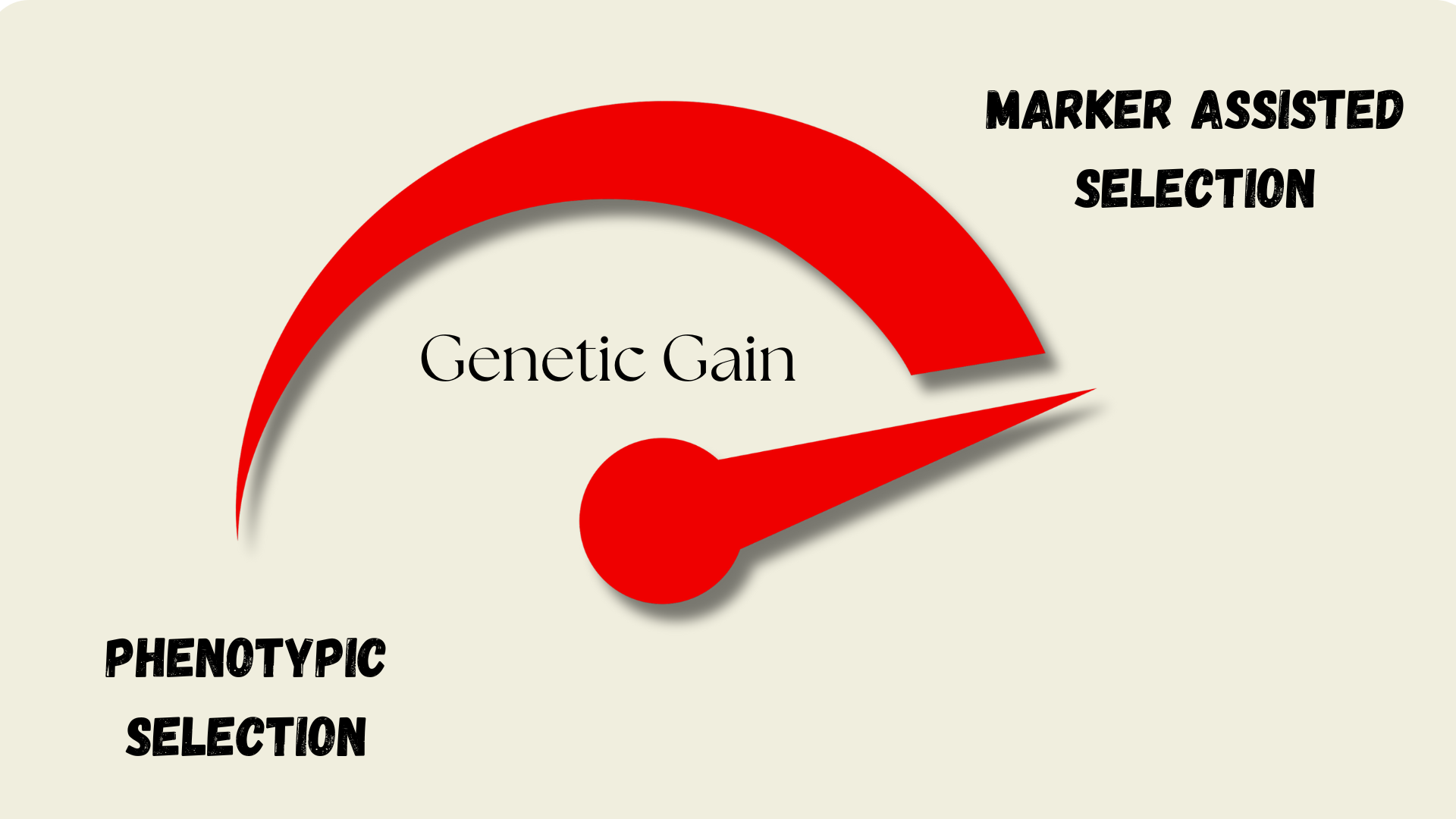TOPICS
- Why Use Molecular Markers in Breeding?
- A Step-by-Step Guide (infographics)
- Case Study: Developing a Molecular Marker for Disease Resistance in Wheat (infographics)
Molecular markers have revolutionized plant breeding by enabling faster and more precise selection of desirable traits. However, many breeders—especially those in small and medium-sized seed companies—struggle to incorporate these tools effectively. The good news is that even without an in-house genotyping laboratory or specialized infrastructure, small and medium-sized companies can still benefit from molecular markers. Today, numerous service providers offer affordable genotyping andaccelerating breeding molecular markers DNA sequencing, making these powerful tools more accessible than ever.
If you’re new to molecular markers, this guide will walk you through the process step by step.
Why Use Molecular Markers in Breeding?
⚠️ The Limitations of Traditional Breeding
Traditional breeding relies heavily on phenotypic selection, where plants are chosen based on observable traits such as yield, resistance to diseases, and quality characteristics. However, this approach has several challenges:
- Influence of the Environment: Traits like yield and disease resistance can be affected by external factors such as climate, soil conditions, and pest pressure.
- Time-Consuming and Labor-Intensive: Many important traits require multiple years of field trials to confirm their stability and heritability.
- High Cost of Specialized Protocols: Advanced selection methods, such as metabolite analysis or pathogen inoculation in controlled growth chambers, require expensive equipment, specialized facilities, and technical expertise. These costs can be prohibitive for many breeding programs, limiting their ability to screen large populations efficiently
- Limited Precision: Some traits, especially those controlled by multiple genes, are difficult to select for using only phenotypic data.
🌱✅ The Advantages of Molecular Markers
Molecular markers help overcome these challenges by providing a direct way to assess genetic variation at the DNA level. The key benefits include:
- Faster Selection: Marker-assisted selection (MAS) allows breeders to screen seedlings for desired traits before field trials. For example, using molecular markers to screen seedlings in the nursery and transplant only those with desirable traits, reduces field space, labor, and resources while accelerating the selection process.
- Greater Accuracy: Selection is based on genetic potential rather than environmental influence.
- Cost-Effective in the Long Run: While initial genotyping costs exist, reducing the number of field trials and breeding cycles ultimately saves money.
🧐🧬 Common Myths About Molecular Breeding
- “Molecular markers are too expensive for small breeding programs.”
- Many cost-effective genotyping services are now available, making MAS accessible even for small programs. Price have come down significantly in the recent years.
- “Molecular markers replace the need for field trials.”
- Field trials are still necessary for validation; markers simply make selection more efficient. For optimal results, traditional phenotypic selection and marker-assisted selection should be integrated when planning the selection strategy.
- “Using molecular markers requires advanced genetics knowledge.”
- While a basic understanding of genetics is helpful, breeders today have access to user-friendly visualization tools and intuitive databases that make it easier to identify and select plants with the correct genotype. Additionally, many training programs are available to help breeders understand marker-assisted selection (MAS) methods, ensuring they can confidently integrate molecular tools into their breeding programs.
A Step-by-Step Guide
1️⃣ Identify the Key Traits You Want to Improve
Before integrating molecular markers, define your breeding objectives. Are you targeting disease resistance, drought tolerance, yield improvement, or quality traits? Identifying the key traits will help you determine which markers to use and how they can support your selection decisions. To start, you should know the genetic complexity of the traits you are working with and consider that:.
- Single-gene traits (e.g., disease resistance, herbicide tolerance) are ideal for marker-assisted selection .
- Polygenic traits (e.g., yield, drought tolerance) may require genomic selection approaches.
2️⃣ Identify the Candidate Molecular Markers
If markers for your trait of interest already exist, you can directly implement them in your program. Many public databases and research publications provide validated markers for common traits. If no markers exist for your target trait, you may need to work with geneticists to develop new ones by running a research project of genetic mapping.
Some major Public Databases for Molecular Markers are:
3️⃣ Select a Genotyping Platform
You can either conduct genotyping in-house or outsource it to a specialized laboratory. Consider:
- High-throughput low-cost genotyping for large populations (e.g., SNP arrays, GBS).
- Low-density, cost-effective markers for routine selection (e.g., KASP assays).
- Pooling samples to reduce costs in early-stage screening.
Outsourcing to genotyping service providers can help you choose the best approach based on your sample size, budget, and turnaround time.
4️⃣ Design and implement your selection strategy based on markers
Once you decide how to generate genotyping data, you should design and implement your selection strategy. Depending on trait’s complexity and your breeding goals, you may consider some of the following protocols :
- Marker-Assisted Selection (MAS): Selecting individuals with favorable alleles for key traits.
- Marker-Assisted Backcrossing (MABC): Accelerating the introgression of traits from donor lines,while minimizing unwanted ones over several generations.
- Genomic Selection (GS): Using a broad set of markers to predict the genetic potential of individuals, especially for complex traits, speeding up the breeding process.
- Early Selectionin the nursery: Using markers for early selection of seedlings in the nursery allows breeders to identify plants with desirable traits at an early stage, before they are transplanted into the field.
5️⃣ Validate and Refine Your Approach
After the first round of marker-based selection, validate your results by assessing whether selected individuals perform as expected. If discrepancies arise, refine the marker set or adjust selection thresholds. This involves:
- Confirm marker-trait associations through multi-location trials and pedigrees.
- Regularly update markers by revising the latest publications or by running new experiments or gene mapping.
6️⃣ Train Your Team and Scale Up
Ensuring your breeding team understands how to interpret and use molecular marker data is crucial. Consider training sessions, workshops, or collaborating with experts. As you gain confidence, scale up marker use across different breeding pipelines.

Check out the infographic below how to get start with marker development

Need Help Getting Started?
At AgroSynapsis, we specialize in helping breeders integrate molecular tools effectively. Whether you need assistance selecting markers, designing a genotyping strategy, or analyzing data, we can provide tailored solutions. Contact us today to explore how molecular markers can enhance your breeding program!
Below , we present a hypothetical case study that illustrates how molecular markers are developed and integrated into a breeding program step by step.
Case Study: Developing a Molecular Marker for Disease Resistance in Wheat
Let’s consider a hypothetical example of a wheat breeder aiming to develop varieties resistant to Fusarium Head Blight (FHB), a destructive fungal disease.
1️⃣ Identifying a Resistance Trait
A wheat breeder observes that some lines of common origin show complete resistance to Fusarium Head Blight (FHB) and wants to introduce this resistance to other lines that are highly susceptible.
Through genetic studies, the breeder knows that the resistance in many cases is controlled by a major locus (Fhb1) located on chromosome 3B. So, this locus is ideal candidate for the resistance and the development of a linked molecular marker.
2️⃣ Mapping the Resistance Gene
Researchers conduct a genetic mapping study to confirm that the locus Fhb1 is responsible for the FHb resistance and secondly, to develop molecular markers closely linked to Fhb1. The process involves the follwoing order of actions:
- Developing a Mapping Population: we cross a resistant parent (carrying Fhb1) to a susceptible parent (lacking Fhb1). The resulting F2 population (or recombinant inbred lines, RILs) segregates for the resistance trait.
- Genotyping and Phenotyping: plants in the population are phenotyped (tested for resistance in controlled field trials). The same plants are genotyped using molecular markers spread across chromosome 3B.
- Linkage Analysis: researchers identify SSR (Simple Sequence Repeat) and SNP (Single Nucleotide Polymorphism) markers tightly linked to the Fhb1 gene. The, they develop an hypothetical specific marker (e.g., SNP-3B-2001) that co-segregates with resistance in 98% of cases, making it a strong candidate.
3️⃣ Validating the Marker
Before using the marker in breeding programs, breeders should validate ir across different genetic backgrounds to ensure reliability. The validation process includes:
- Testing the marker on different wheat pedigrees to confirm it consistently differentiates resistant and susceptible plants.
- Conducting field trials in multiple environments to verify that resistance detected by the marker translates into actual field performance.
- Checking for false positives/negatives to refine the marker’s accuracy.
After validation, SNP-3B-2001 is confirmed as a reliable marker for Fhb1 resistance and ready for integration into the breeding program.
4️⃣ Integrating the Marker into the Breeding Program
Now that a linked marker is available, breeders can use it to accelerate selection. The integration process includes one of the following protocols:
- Marker-Assisted Selection (MAS) in Early Generations: instead of waiting for field trials to assess resistance, breeders can screen seedlings using SNP-3B-2001 and eliminate susceptible individuals early. This reduces field testing costs and speeds up the breeding cycle.
- Marker-Assisted Backcrossing (MABC) for Rapid Introgression: if breeders want to introduce Fhb1 resistance into an elite but susceptible wheat variety,They should cross the elite variety with a resistant donor.They continue backcrossing the F1 generation is to the elite parent while selecting for SNP-3B-2001 in each cycle. After three backcrosses, 95% of the genome resembles the elite variety, but now it carries the Fhb1 resistance gene.
- Marker-Assisted Pyramiding for Durable Resistance: since relying on a single gene may lead to pathogen resistance breakdown or may not be sufficient for new wheat material added in the breeding program , breeders can stack multiple resistance genes (e.g., Fhb1, Fhb2, and Fhb5) using molecular markers for each.
5️⃣ Deploying Resistant Varieties and Continued Monitoring
Once resistant lines are developed, they undergo field trials before commercial release. Continuous monitoring ensures that the SNP-3B-2001 marker remains effective as pathogen populations evolve or new wheat lines are introduced in the breeding program.

Check out the infographic below about an hypothetical case study of developing a molecular marker

🟢📌Key Take aways from This Case Study
- Major genetic loci (like Fhb1 resistance) are ideal for marker-assisted selection because they follow simple inheritance patterns.
- Marker development involves genetic mapping, validation, and large-scale implementation.
- Molecular markers significantly reduce breeding time by allowing early selection.
- Stacking multiple resistance genes can provide long-term durability against evolving pathogens.


